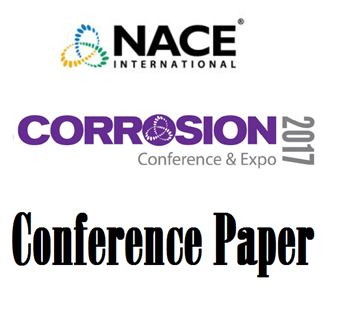Search
Individual Conference Papers
View as
Sort by
Display
per page
Electrochemical Evaluation of the Localized Corrosion Susceptibility of Ni Based Precipitation Hardening Alloys in Supercritical Sour Gas Service Conditions
Product Number:
51324-20426-SG
Publication Date:
2024
$40.00
Electrochemical Impedance Spectroscopy (EIS) Analysis of Freshwater Foul-Release Coatings
Product Number:
41213-789-SG
Publication Date:
2013
$20.00
Electrochemical Injection of Corrosion Inhibitors and Chloride Extraction for Protection of Steel Reinforcement
Product Number:
51319-13451-SG
Publication Date:
2019
$20.00
Electrochemical Investigation and Modeling of Cathodic Reactions on Iron Sulfides in Acidic Solutions
Product Number:
51323-19428-SG
Publication Date:
2023
$20.00
Electrochemical Investigation Into the Influence of Monoethylene Glycol on CO2 Corrosion in the Presence of Acetic Acid
Product Number:
51321-16332-SG
Publication Date:
2021
$20.00
Electrochemical Investigation Of Alloys For Alkaline Water Electrolyzers
Product Number:
51321-16975-SG
Publication Date:
2021
$20.00
Electrochemical Investigation of Duplex Stainless Steel Cladded Carbon Steel Manufactured via Powder
Product Number:
51319-13538-SG
Publication Date:
2019
$20.00
Electrochemical Investigation of the Integrity of Cathodic Protection MMO Anodes in the Presence of Vapor Corrosion Inhibitors
Product Number:
51324-21177-SG
Publication Date:
2024
$40.00
Electrochemical Methods vs Long-Term Immersion Tests to Assess Localized Corrosion Tendencies of Corrosion Inhibitors (Phase II)
Product Number:
MECC23-20180-SG
Publication Date:
2023
$20.00
Electrochemical Model of CO2 Corrosion in the Presence of Quaternary Ammonium-type Corrosion Inhibitor Model Compounds
Product Number:
51319-13392-SG
Publication Date:
2019
$20.00
Electrochemical Model of Sour Corrosion of Mild Steel - Validation at High H2S Partial Pressures
Product Number:
51317--9098-SG
ISBN:
9098 2017 CP
Publication Date:
2017
$20.00
Electrochemical Noise Measurements for Assessing Level of Corrosion Protection Being Afforded by a Coating to External Metal Structures Using a Hand-Held Portable Device
Product Number:
51318-10860-SG
Publication Date:
2018
$20.00












